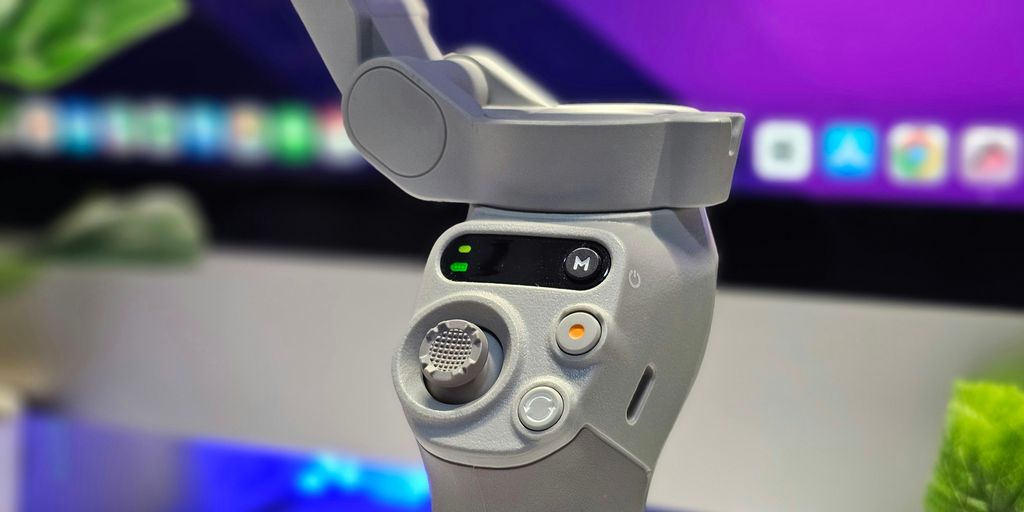So, you want to review gadgets? That’s awesome! The world of tech is always changing, and there’s always new stuff to check out. This guide is all about helping you get started or even get better at reviewing. We’ll talk about everything from setting up your space to making money from your reviews. It’s a fun journey, and by 2025, knowing how to properly review gadgets will be more important than ever.
Key Takeaways
- The tech review scene is always moving, so you gotta keep up with new trends and find your own special spot.
- Having the right gear, like a good camera and some testing software, makes your reviews way better.
- Make your reviews interesting! Tell a story, use good words, and throw in some pictures or videos to keep people hooked.
- Test gadgets thoroughly in real life, not just in a lab. See how tough they are and if they actually work like they should.
- You can make money from reviewing by working with brands or using affiliate links. Just be honest about it.
Understanding the Gadget Review Landscape

It’s 2025, and the world of gadget reviews is a whole different ball game than it used to be. Forget just reading a spec sheet; people want real insights, honest opinions, and maybe even a little entertainment. Let’s break down what’s happening in this space.
The Evolution of Tech Reviews
Remember when tech reviews were just dry lists of features in a magazine? Yeah, those days are long gone. Now, it’s all about video reviews, interactive demos, and getting a feel for how a gadget fits into your actual life. The shift from print to digital has completely changed how we consume reviews. Think about it: you can watch someone unbox a new phone, test its camera in real-time, and even see how it holds up after a week of use – all before you even think about buying it. It’s a much more immersive experience.
Key Players in Gadget Reviewing
Who’s calling the shots in the gadget review world? You’ve still got your big names like PCMag, known for their lab-tested reviews, and Tom’s Guide, but there’s also a huge wave of independent creators and niche blogs. YouTube is massive, with channels dedicated to everything from smartphones to smart home devices. And don’t forget social media; influencers can make or break a product with a single post. It’s a crowded space, but that also means there’s a review source out there for pretty much everyone.
Identifying Your Niche in Gadget Reviews
So, you want to get into gadget reviews? Great! But you can’t just review everything and expect to stand out. You need a niche. Are you all about wearables for fitness enthusiasts? Maybe you’re the go-to person for smart home tech for seniors? Or perhaps you’re obsessed with retro gaming gadgets? Find your passion, and focus on that. Here’s why:
- Targeted Audience: You’ll attract a loyal following of people who are genuinely interested in what you have to say.
- Less Competition: Instead of competing with everyone, you’re only competing with a smaller group of reviewers.
- Authority: You’ll become known as an expert in your specific area, which builds trust and credibility.
Essential Tools for Effective Gadget Reviews
Reviewing gadgets in 2025 isn’t just about playing around with the latest tech. To do it right, you need the right tools. Think of it as setting up a proper workshop – you wouldn’t try to build a house with just a hammer, would you?
Setting Up Your Review Lab
First things first, you need a dedicated space. It doesn’t have to be huge, but it should be organized and free from distractions. Good lighting is absolutely key – both natural and artificial. You’ll also want a clean backdrop for photos and videos. Think about investing in:
- A decent adjustable desk: Ergonomics matter when you’re spending hours testing.
- Cable management solutions: Keep things tidy and prevent tripping hazards.
- Power strips and surge protectors: Essential for handling multiple devices.
Software for Performance Analysis
Beyond just saying a gadget feels fast, you need to back it up with data. That means using software to benchmark performance. Here are some categories to consider:
- System monitoring tools: Keep an eye on CPU usage, RAM, and temperature.
- Benchmarking software: Run standardized tests to compare devices.
- Battery testing software: Accurately measure battery life under different conditions.
For example, if you’re reviewing a new phone, you might use Geekbench to test its processing power or a specialized app to measure battery drain during video playback. It’s all about providing concrete evidence to support your claims. PCMag.com delivers lab-tested reviews of the latest products and services.
Photography and Videography Gear for Gadget Reviews
Visuals are super important. People want to see what they’re potentially buying. You don’t need to break the bank, but investing in some basic equipment will make a big difference. Consider these:
- A good camera: Your smartphone camera might be okay, but a dedicated camera will give you more control.
- A tripod: Essential for stable shots and time-lapses.
- Lighting equipment: Even a simple ring light can dramatically improve the quality of your videos.
Don’t forget about audio! A decent microphone will ensure your voice is clear and easy to understand. Nobody wants to watch a review with muffled sound. If you need to repair a gadget, consider the iFixit Pro Tech toolkit.
Crafting Compelling Gadget Review Content
Structuring Your Review Narrative
Okay, so you’ve got a shiny new gadget to review. Awesome! But before you start rambling, think about how you’re going to tell the story. A good review isn’t just a list of features; it’s a narrative. Start with an intro that grabs attention – what’s exciting or unique about this gadget? Then, walk the reader through your experience, from unboxing to daily use. Don’t forget a clear conclusion that summarizes your overall impression and who this gadget is really for.
Writing Engaging and Informative Copy
Nobody wants to read a boring review. Keep your writing style conversational and relatable. Imagine you’re explaining the gadget to a friend. Use clear, simple language and avoid tech jargon unless it’s absolutely necessary. Back up your opinions with evidence – don’t just say something is good or bad; explain why. And for the love of all that is holy, proofread! Typos and grammatical errors kill credibility faster than a buggy operating system. Think about the target audience and write for them.
Integrating Multimedia for Impact
In 2025, text alone just doesn’t cut it. People want to see and hear about the gadget in action. High-quality photos are a must – show off the design, ports, and key features. Even better, include a video review. A well-produced video can demonstrate the gadget’s functionality, user interface, and overall experience in a way that words simply can’t. Consider these elements:
- Unboxing Video: Show the initial experience.
- Demo Video: Highlight key features and functions.
- Comparison Video: Pit the gadget against its competitors.
| Media Type | Impact Level | Production Effort |
|---|---|---|
| Photos | Medium | Low |
| Video | High | Medium-High |
| Audio Clips | Low-Medium | Low-Medium |
Don’t forget about audio! Short audio clips can be great for highlighting sound quality or recording user feedback. Make sure you have the right photography gear to capture the best shots.
Testing Methodologies for Gadget Reviews
Benchmarking Performance Metrics
When it comes to gadget reviews, numbers matter. A lot. We’re not just talking about specs on a page; we’re talking about real, measurable performance. That’s why benchmarking is so important. It gives us a standardized way to compare devices. We use a mix of industry-standard benchmarks and custom tests to push gadgets to their limits. For example, when reviewing a new smartphone, we run tests like Geekbench for CPU performance, 3DMark for graphics, and custom battery drain tests to see how long it lasts under different usage scenarios. Here’s a quick look at some common metrics:
- CPU Performance: Measured using Geekbench, focusing on single-core and multi-core scores.
- GPU Performance: Assessed with 3DMark, testing graphics capabilities for gaming and other intensive tasks.
- Battery Life: Evaluated through video playback, web browsing, and gaming simulations.
We also look at things like storage speeds (read/write) and network performance (Wi-Fi, 5G). All this data helps us paint a clear picture of how well a gadget performs compared to its competitors. You can check out current technological trends to see how these benchmarks are evolving.
Real-World Usage Scenarios
Benchmarks are great, but they don’t tell the whole story. How does a gadget feel to use every day? That’s where real-world testing comes in. We put gadgets through their paces in everyday situations. For a phone, that means making calls, sending texts, browsing social media, taking photos, and playing games. For a laptop, it’s about writing documents, editing photos, video conferencing, and running multiple applications at once. We pay attention to things like:
- Responsiveness: How quickly does the device react to user input?
- Multitasking: How well does it handle multiple apps running simultaneously?
- User Experience: Is it easy and enjoyable to use?
We also consider the target audience. A gaming laptop will be tested with demanding games, while a budget tablet will be evaluated based on its ability to handle basic tasks smoothly. It’s about matching the device to its intended use case. We also consider how the device performs over extended periods. Does it get too hot? Does the battery life degrade quickly? These are important factors that benchmarks alone can’t reveal.
Durability and Longevity Assessments
Nobody wants a gadget that breaks after a few months. That’s why we also assess durability and longevity. This can involve a range of tests, from simple drop tests to more complex environmental simulations. We look at things like:
- Build Quality: How solid and well-constructed does the device feel?
- Scratch Resistance: How well does the screen and body resist scratches?
- Water and Dust Resistance: Does it have an IP rating, and how well does it hold up in real-world conditions?
We also consider the long-term software support. Will the manufacturer provide updates for several years? This is especially important for smartphones and other devices that rely on software updates for security and new features. We also check for common failure points. For example, with foldable phones, we pay close attention to the hinge mechanism. With wearables, we look at the durability of the straps and sensors. It’s about trying to predict how well the gadget will hold up over time. We might even use an iFixit Pro Tech toolkit to take a peek inside and assess the quality of the components and construction.
Monetizing Your Gadget Review Platform
Okay, so you’re cranking out awesome gadget reviews. Now, how do you actually make some money doing it? It’s not always easy, but there are definitely ways to turn your passion into something that pays the bills. Let’s look at some options.
Affiliate Marketing Strategies
Affiliate marketing is probably the most common way gadget reviewers start making money. Basically, you recommend a product and include a special link to where people can buy it. If someone clicks your link and buys the product, you get a cut of the sale. It’s pretty straightforward. The key is to be genuine and only recommend stuff you actually believe in. Don’t just push anything and everything; your audience will see right through it. Here’s a few things to keep in mind:
- Choose the right programs: Amazon Associates is a big one, but don’t be afraid to look at smaller, more niche affiliate programs that might offer better commissions for specific gadgets.
- Disclose, disclose, disclose: Be upfront about the fact that you’re using affiliate links. It builds trust with your audience. No one likes feeling like they’re being tricked.
- Track your results: Use analytics to see which links are performing best and which products are actually converting into sales. This helps you refine your strategy over time. You can monetize a website with affiliate marketing.
Sponsored Content and Brand Partnerships
Once you’ve built up a decent audience, you can start exploring sponsored content. This is where a company pays you to review their product or feature it in your content. It can be a great way to boost your income, but it also comes with some responsibility.
- Be selective: Don’t just partner with any brand that comes along. Make sure their values align with yours and that their products are something you’d actually recommend.
- Maintain transparency: Clearly label sponsored content as such. Your audience needs to know when you’re being paid to promote something.
- Negotiate fair rates: Don’t be afraid to ask for what you’re worth. Consider your audience size, engagement rate, and the amount of work involved in creating the content.
Diversifying Revenue Streams
Don’t put all your eggs in one basket. Relying solely on affiliate marketing or sponsored content can be risky. If one of those streams dries up, you’re in trouble. Here are some other ways to make money from your gadget review platform:
- Selling digital products: Create guides, courses, or templates related to gadget reviews or specific types of tech.
- Running ads: Display ads on your website or YouTube channel. It’s not always the most lucrative option, but it can provide a steady stream of passive income.
- Offering consulting services: If you’re an expert in a particular area of tech, offer your services to businesses or individuals who need help with purchasing decisions or setting up their gadgets.
Building Authority and Trust in Gadget Reviews
Building trust is super important if you want people to actually read and believe your gadget reviews. It’s not just about having the latest tech; it’s about showing you know your stuff and that you’re being honest with your readers. Here’s how to do it:
Establishing Credibility with Data
Data is your friend. Don’t just say a gadget is fast; show it. Use benchmarks, performance metrics, and comparisons to back up your claims. People trust numbers more than opinions. For example, if you’re reviewing a new phone, include battery life tests, camera performance scores, and processing speed benchmarks. A simple table can work wonders:
| Metric | Gadget X | Competitor A | Competitor B |
|---|---|---|---|
| Battery Life | 12 hours | 10 hours | 11 hours |
| Camera Score | 95 | 90 | 92 |
| Processing Speed | 2.8 GHz | 2.5 GHz | 2.7 GHz |
Presenting data clearly and consistently builds confidence in your reviews. Make sure your testing methodology is transparent, so readers know how you arrived at your conclusions. This is especially important when reviewing antivirus protection.
Engaging with Your Audience
Don’t just talk at your audience; talk with them. Respond to comments, answer questions, and participate in discussions. Create polls or surveys to get their opinions on gadgets you’re reviewing or planning to review. Host Q&A sessions on social media. This shows you care about what they think and that you’re not just pushing products. Plus, it gives you valuable feedback for future reviews. Here are a few ways to engage:
- Respond to comments on your website and social media channels.
- Run polls asking about reader preferences.
- Host live Q&A sessions.
- Create a forum or community section on your site.
Maintaining Objectivity and Transparency
Be upfront about any potential biases. If you received a free product for review, disclose it. If you have affiliate links, let people know. Don’t sugarcoat your reviews to please manufacturers or sponsors. People can spot a fake review a mile away, and once you lose their trust, it’s hard to get it back. Always aim for balanced reviews, highlighting both the pros and cons of each gadget. Objectivity is key. If you are reviewing video streaming services, be sure to mention the cons as well as the pros. Here’s a simple checklist for transparency:
- Disclose any free products or sponsorships.
- Clearly label affiliate links.
- Present a balanced view, highlighting both pros and cons.
- Acknowledge limitations in your testing or knowledge.
Future Trends in Gadget Reviewing
The Impact of AI on Gadget Innovation
AI is changing everything, and gadgets are no exception. We’re seeing AI integrated into devices in ways we couldn’t have imagined just a few years ago. Think about it: AI-powered cameras that automatically adjust settings, earbuds that personalize sound based on your hearing profile, and even smart home devices that learn your routines and anticipate your needs. This means gadget reviews need to evolve to assess not just the hardware, but also the effectiveness and ethical implications of the AI algorithms driving these devices. It’s not enough to say a camera takes good pictures; we need to understand how the AI is processing those images and whether it’s doing so fairly and accurately.
Emerging Gadget Categories to Watch
Forget just phones and laptops; the gadget landscape is exploding with new categories. We’re talking about:
- AR/VR Hybrids: Devices that seamlessly blend augmented and virtual realities are becoming more sophisticated and user-friendly.
- Foldable Everything: It’s not just phones anymore. Expect foldable tablets, laptops, and even TVs to become more common. Durability will be a key factor in reviews.
- Personalized Health Tech: Gadgets that monitor everything from your sleep patterns to your blood glucose levels are getting more advanced. Accuracy and data privacy are crucial considerations.
- Sustainable Tech: Eco-friendly gadgets made from recycled materials and designed for longevity are gaining traction. Reviews will need to assess their environmental impact.
These new categories demand new testing methodologies and review criteria. We can’t just apply the same standards we use for smartphones to robotic toy pets, for example.
Adapting to Evolving Consumer Expectations
Consumers are getting smarter and more demanding. They’re not just looking for a list of specs; they want to know how a gadget will fit into their lives and solve their problems. Reviews need to be more personalized and relatable. Here’s what that means:
- Focus on real-world usage: Ditch the jargon and focus on how the gadget performs in everyday scenarios.
- Incorporate user feedback: Include quotes and insights from real users to provide a more balanced perspective.
- Emphasize long-term value: Consider the gadget’s lifespan, software support, and potential for future updates.
Ultimately, the future of gadget reviewing is about building trust and providing consumers with the information they need to make informed decisions. It’s about going beyond the specs and understanding the gadget innovation and its impact on our lives.
Wrapping Things Up
So, there you have it. Reviewing gadgets in 2025 is a pretty cool gig, but it’s also got its own set of challenges. You’ve gotta stay on top of all the new stuff coming out, figure out what really matters to people, and then explain it all in a way that makes sense. It’s not just about listing specs anymore; it’s about telling a story and showing how these gadgets fit into our lives. If you keep these ideas in mind, you’ll be able to give people the real scoop on all the latest tech. It’s a fun journey, and honestly, there’s always something new to learn.
Frequently Asked Questions
How do I start reviewing gadgets if I’m new to it?
To get started, you’ll want to pick a type of gadget you really like, like phones or gaming gear. Learn as much as you can about them. Then, gather some basic tools like a good camera and simple video editing software. Practice writing clear and helpful reviews.
What’s the best way to make people trust my gadget reviews?
Being honest is key. Always tell people what you really think about a gadget, good or bad. Show your tests and results clearly. And make sure to talk to your audience, answer their questions, and build a community around your reviews.
How can I earn money from reviewing gadgets?
You can make money in a few ways. One is through ‘affiliate links,’ where you get a small cut if someone buys a gadget through your link. Another is by working with companies to review their products, but always be clear if a review is sponsored. You can also sell your own merchandise or offer special content to loyal fans.
What kind of gadgets should I focus on reviewing?
The best gadgets to review are often new and exciting ones that many people are talking about. Think about popular phones, smart home devices, or cool new tech that just came out. Also, consider gadgets that solve common problems or offer something truly unique.
Is it important to use videos and pictures in my gadget reviews?
Yes, it’s super important! Videos let you show the gadget in action, how it feels, and what it sounds like. Good photos help people see all the details. Using both makes your reviews much more interesting and helpful than just plain text.
What’s the best way to test gadgets to give a good review?
Always test gadgets like a real person would use them every day. Don’t just run fancy computer tests. Try dropping them (carefully!), using them in different places, and seeing how long the battery lasts with normal use. This gives people a better idea of what to expect.














